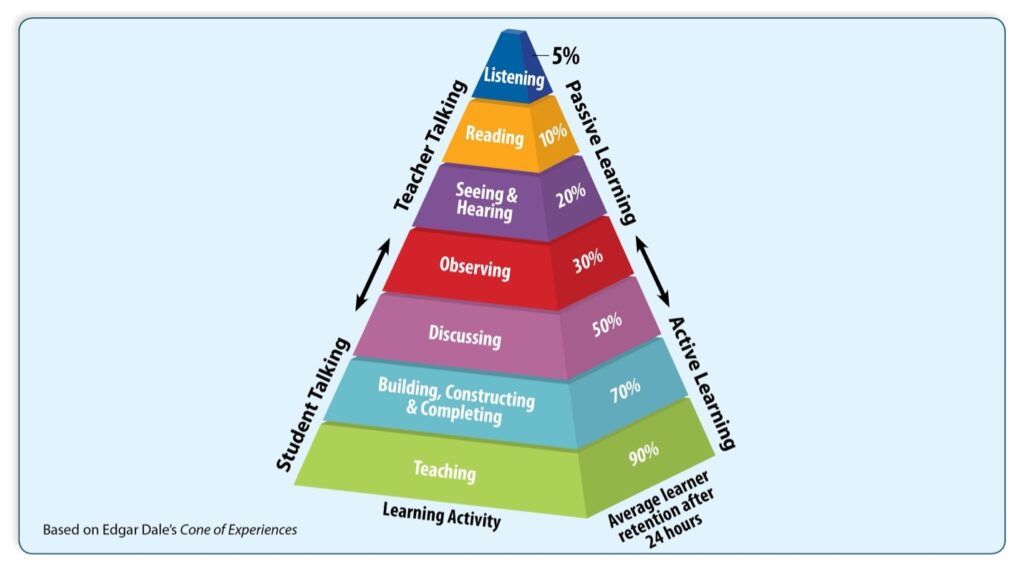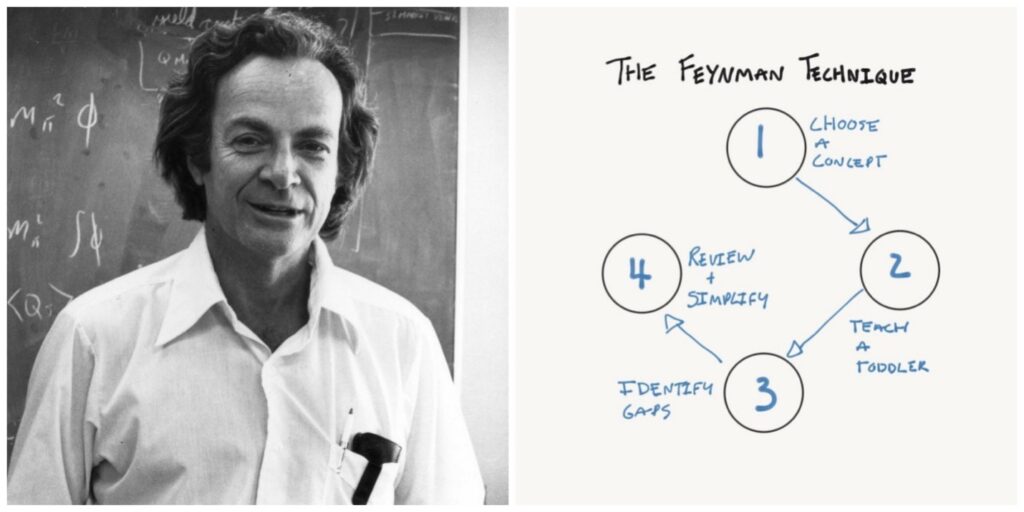Active VS Passive Learning

When we think about passive learning, the techniques usually include traditional lectures, reading, and watching videos. On the contrary, Active Learning is an approach to instruction that involves actively engaging students with the course material through hands-on skill-building, discussions, problem-solving, reflective writing, case studies, and other methods (What Is Active Learning, n.d.).
Through active learning, students gain information and comprehension, which they may subsequently apply to new situations and issues. Active learning also assists students in learning and developing autonomy, allowing them to become more involved and in control of the learning process, as well as acquiring skills for lifetime learning. Active learning can also aid in the development of metacognitive thinking in kids. Active learners have higher grades and better long-term recall of skills and facts than passive learners.
The Feynman Technique is an example of active learning. There are four steps in total:
- Acquire: initially absorb the knowledge.
- Teach: explain to others what you have acquired.
- Review: evaluate your own instruction, either by others or by yourself, and go over the weak parts.
- Simplify: concentrate on refining and transforming information.

Game-Based Learning VS Gamification
Game-based learning is a learning strategy that uses a game to attain a learning goal. As an economics student, for example, when I took Environmental Economics, students actually did virtual trading in class to get the best price and understand the theory. Games-based learning takes the content of learning material and turns it into an enjoyable experience. The learning experience is the game.
Gamification does not need the employment of all or all of the game elements/mechanisms at the same time, but rather adds the game’s features to the process as needed. If the goal is to motivate a student to complete 10 math exercises, for example, some aspect of the game-reward system, such as points, badges, and leader boards, may be required.
The following are the top five gamification examples in education today:
- Minecraft – Education Edition
- Google’s Read Along
- Kahoot
- Archy Learning
- Elucidat
References
What is Active Learning? (n.d.). Queens University – Teaching & Learning. Retrieved May 28, 2022, from https://www.queensu.ca/teachingandlearning/modules/active/04_what_is_active_learning.html
Leave a Reply
You must be logged in to post a comment.